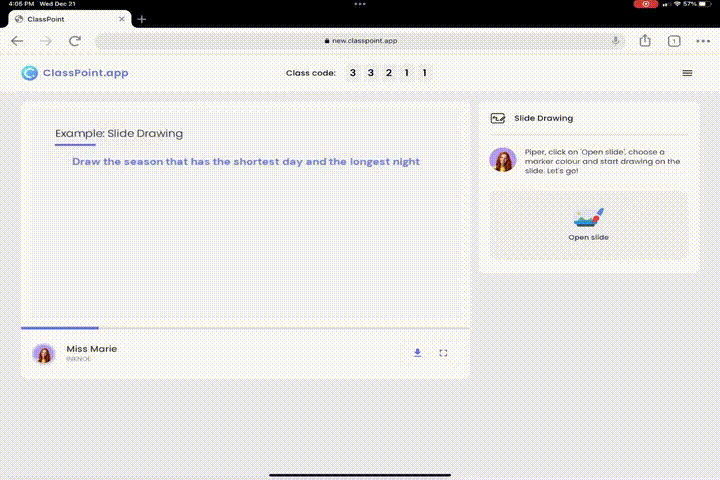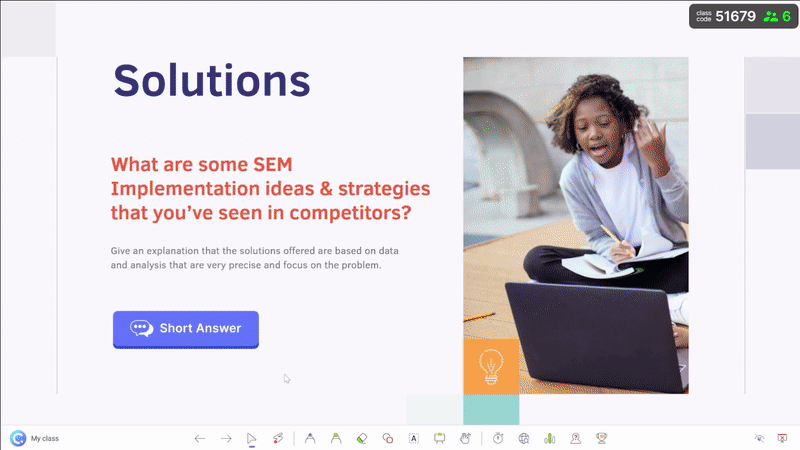With the rapid growth of AI tools available that are capable of generating text, images, and even audio, there’s a growing concern about their misuse in academic settings and potential impact on academic integrity. Students can now easily generate essays, research papers, and other assignments using AI-powered tools, specifically sparking concerns about the classroom implications of AI plagiarism and fabrication.
Academic integrity is a cornerstone of education, essential for fostering critical thinking, creativity, and knowledge acquisition. How can educators combat these concerns and ensure their students are still learning?
This blog post delves into the answers and the classroom implications of AI plagiarism and fabrication for teachers and students, as well as expert-backed strategies to combat them.
Understanding AI-Generated Plagiarism and Fabrication

Plagiarism Explained
Plagiarism, traditionally defined as the act of using someone else’s work without proper attribution, has taken on new dimensions with new and easily accessible AI tools and features. AI-powered tools can generate content that closely resembles human writing, making it increasingly challenging to detect instances of plagiarism. Using AI-generated content without acknowledgement is a form of plagiarism.
Fabrication Explained
Furthermore, fabrication, the creation of entirely fictitious information, poses additional challenges for educators striving to maintain academic integrity in the classroom. Teachers have noted that students will hand in essays, properly cited with great information, only to realize that the citation was totally made up, using similar sounding authors, articles, and websites to existing ones in that field already.
Classroom Implications of AI Plagiarism and Fabrication
Hindering Student Learning

Students must understand the serious consequences of engaging in plagiarism and fabrication. These unethical practices erode the foundation of academic integrity, compromising students’ ethical development and moral reasoning.
Beyond the risk of academic sanctions, dishonesty undermines the integrity of their education and their learning and development. By resorting to AI tools for content generation, students bypass essential processes of critical thinking, analysis, and synthesis, stifling their intellectual growth and hindering their ability to engage deeply with course material.
Added Time and Tasks for Teachers

Identifying AI-generated content is getting more difficult as traditional plagiarism detection methods may struggle to differentiate between authentic and AI-generated content. Adding to the mountainous pile of tasks that educators already have, they must stay up to date of the latest technological developments and continually modernize their strategies for detecting and preventing academic dishonesty.
Otherwise, without reliable methods for detecting the AI work, they may be rewarding academic dishonesty or penalizing students unfairly.
Luckily, there are also AI tools that can be used to help save teachers time for a multitude of tasks, like lesson planning, creating presentations, grading and more.
Social and Ethical Concerns
When students resort to AI tools for content generation, they not only compromise their own ethical principles but also undermine the integrity of the academic community as a whole. This loss of trust can have far-reaching consequences, destroy the credibility of educational institutions and diminishing public confidence in the value of education.
Furthermore, these practices exacerbate existing disparities in access to education and resources, widening the gap between privileged and marginalized students. While affluent students may have access to sophisticated AI tools and private tutoring services that facilitate academic dishonesty, disadvantaged students may lack the means to compete on an equal footing.
As a result, AI plagiarism and fabrication deepen social inequalities and reinforce systemic barriers to educational equity and opportunity. By promoting ethical conduct, fostering a culture of academic integrity, and advocating for equitable access to education, stakeholders can work towards a more just and inclusive educational system that empowers all students to thrive and succeed.
Educators, policymakers, and technology developers must collaborate to ensure that AI is leveraged responsibly and ethically to support, rather than undermine, academic integrity.
8 Brilliant Strategies for Educators to Combat AI-Generated Plagiarism and Fabrication

#1 Educate Students
First and foremost, inform students about the classroom implications of AI plagiarism and fabrication. Communicate clear expectations for assignments and provide guidance on proper citation practices to help student succeed from the get-go.
By raising awareness about the risks and consequences of academic dishonesty, educators can empower students to make informed decisions and resist the temptation to use AI tools unethically.
#2 Use AI Plagiarism Checkers
AI plagiarism checkers use sophisticated algorithms to analyze text and compare it against a database of known sources, helping educators identify suspicious similarities and investigate further when necessary.
Educators can integrate AI plagiarism checkers or detectors into their grading and assessment processes, using it as a proactive measure to deter plagiarism and promote academic integrity; however, be wary of its limitations as it won’t catch everything.
Check out these 9 best free AI detectors recommended by educators in your classroom.
#3 Revise Assessment Methods
Consider alternative assessment methods such as oral presentations, peer reviews, projects, and in-class assignments/discussions to reduce the reliance on written assignments where students can be tempted to use AI.
Designing assignments that require critical thinking, analysis, and synthesis can deter students from relying on AI tools for content generation. Assignments that emphasize originality, creativity, and personal reflection encourage students to engage deeply with course material and demonstrate their unique insights.
During class, keep students engaged throughout the lesson with interactive presentations that incorporate polls, quizzes, and interactive slides.
With education tools like ClassPoint, you can incorporate a live quiz into your presentation to instantly check students understanding, letting you know exactly where their knowledge gaps are and brings more participation and collaboration in the classroom.
#4 Advocate for Policy Changes
Advocate for institutional policies that address AI plagiarism and academic integrity, ensuring that students are held accountable for their actions. These policies should outline clear consequences for AI-related infractions and establish procedures for investigating and resolving cases of misconduct.
Collaborative efforts between educators, administrators, and policymakers are necessary to develop comprehensive solutions, including investing in advanced detection software and providing support for educators.
#5 Encourage Originality
Educators can design assignments that foster critical thinking, creativity, and originality, thereby reducing the temptation for students to engage in dishonest practices. By incorporating project-based learning, blended learning, cognitive learning, case studies, and problem-solving tasks, educators create opportunities for students to demonstrate their unique insights and perspectives. Emphasizing the value of original thought and rewarding innovative approaches encourages students to engage meaningfully with course material and produce authentic work.
Emphasizing the value of original thought and rewarding innovative approaches encourages students to engage meaningfully with course material and produce authentic work. To easily incorporate an invaluable tool for educators, create interactive presentations in PowerPoint with ClassPoint. Instead of typical multiple choice or written answers, students can respond with an image, video, audio recording or by drawing.
This not only makes learning more engaging and interactive but also allows students to demonstrate their understanding in a way that best suits their learning style.

Don't forget to reward your students' originality with these Gamification elements to spark engagement and progress.
#6 Open Dialogue
Maintaining open lines of communication with students is essential for addressing concerns, clarifying expectations, and reinforcing the importance of academic integrity. Educators should create a supportive learning environment where students feel comfortable discussing academic challenges and seeking guidance when needed.
By engaging in proactive communication strategies, such as regular feedback sessions, office hours, and class discussions, educators can cultivate a culture of transparency and trust, encouraging students to voice their questions and concerns and reducing the likelihood of academic dishonesty.
Learn more from this Ultimate Guide to Classroom Management.
#7 Promote Academic Integrity
Educators can communicate the importance of academic integrity through course syllabi, class discussions, and academic integrity policies. By modeling ethical behavior and holding students accountable for their actions, educators can reinforce the values of honesty, integrity, and fairness in academic work.
Throughout your lesson, design interactive assessments to teach academic integrity. With ClassPoint, you can teach academic integrity without losing student interest with Quiz Mode, Multiple Choice Question, Short Answer, and Fill-in-the-Blanks.

#8 Embrace Technology Ethically
Introduce AI tools to enhance learning experiences and teach students how to use them ethically. Using AI in the classroom can be beneficial, so teaching educating yourself, and your students how and when to use them, can help teach them digital literacy and responsible digital citizenship.
By incorporating ethics education into the curriculum and modeling ethical behavior, you can empower students to navigate the digital landscape with integrity and discernment.
Closing Thoughts
The rise of AI tools offers a double-edged sword in the academic sphere. While they can empower students and educators both to enhance learning experiences, they also pose significant challenges to academic integrity with the classroom implications of AI plagiarism and fabrication looming overhead.
As educators, it is crucial to maintain a proactive stance: educate students about the ethical implications, leverage technology ethically ourselves, and continually adapt our teaching strategies to uphold academic honesty in the face of evolving technologies with EdTech tools.
